Introduction
Nestled in the heart of southern France, the Languedoc wine region embodies the essence of French viticulture, offering a fascinating blend of tradition, innovation, and diversity. Renowned for its vast array of high-quality yet affordable wines, Languedoc is not just a wine-producing area; it’s a viticultural treasure waiting to be explored. With its sunny Mediterranean climate, diverse terroirs, and passionate winemakers, Languedoc wines are a testament to the region’s rich heritage and its role in shaping the future of French wine.
1. The Langue d’oc e d’oil region
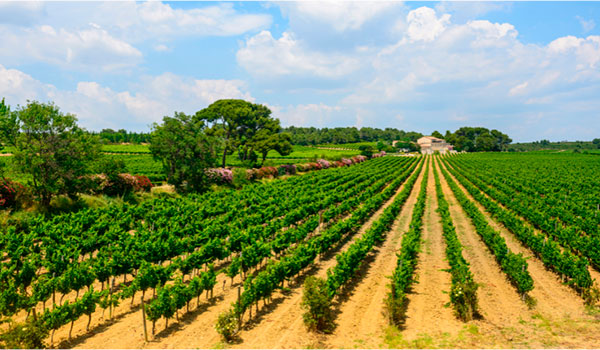
The Languedoc wine region, a jewel in the southern part of France, stretches from the Rhône Valley in the east to the Pyrenees mountains and the Spanish border in the west. This vast territory is distinguished by its variety of landscapes, including long sandy beaches, historic towns with Roman heritage, and the vibrant, sun-soaked vineyards that are the lifeblood of the area.
Historically, the region is defined by the Langue d’oc, the vernacular language spoken in the south of France, as opposed to the Langue d’oïl spoken in the north. This linguistic divide marks not just a cultural but also a vinicultural boundary, with Languedoc wines embodying the warmth, diversity, and bold flavors of the south.
The Mediterranean climate here, characterized by hot, dry summers and mild winters, is ideal for viticulture, enabling a wide variety of grape varieties to flourish. The coastal plains of the Languedoc, basking in the Mediterranean sun, contrast with the Roussillon’s narrow valleys nestled among the Pyrenees. This diversity in geography and climate contributes to the unique character of Languedoc wines, which range from powerful reds to fresh rosés and elegant whites.
The region’s viticultural practices have evolved over the centuries, adapting to challenges such as drought and severe weather, which are mitigated by both traditional wisdom and modern technology. The soils vary greatly across the region, from chalk, limestone, and gravel inland to more alluvial soils near the coast, providing a complex palette for winemakers to craft wines with distinctive terroirs.
Languedoc-Roussillon is celebrated not only for its sun-drenched vineyards but also for being a pioneer in organic wine production in France. The shift from quantity to quality in recent decades has placed Languedoc wines on the map as not only affordable but also of high quality, embodying the spirit of innovation and respect for tradition.
The wineries of Languedoc are as diverse as the landscape, offering visitors a chance to explore the rich tapestry of French viticulture. From the historical depth of Greco-Roman vineyards to the cutting-edge practices of today’s vintners, Languedoc stands as a testament to the enduring allure of French wine.
Stay tuned as we delve deeper into the fascinating history, diverse grapes, and unique terroirs of Languedoc, revealing why this region deserves a place in the heart of every wine lover.
2. A Brief Visit to Languedoc’s Past
The history of winemaking in Languedoc is as rich and complex as the wines it produces, with roots stretching back to ancient times. The region’s viticultural journey began with the Greeks in the 5th century BC, who introduced the vine to this fertile land. However, it was the Romans who truly established winemaking as a cornerstone of Languedoc’s culture and economy. The remnants of Roman influence can still be seen today, not just in the ancient vineyards, but also in the architectural marvels scattered across the landscape, such as the arenas of Nîmes and the Pont du Gard.
Throughout the Middle Ages, the Church played a pivotal role in the development of Languedoc’s wine industry. Monasteries and abbeys became centers of vinicultural knowledge and innovation, with monks cultivating the vines and producing wine for religious ceremonies and local consumption. The wines of Languedoc were transported along the Via Domitia, the first Roman road built in Gaul, linking the region to the rest of the Roman Empire and facilitating the spread of its wines across Europe.
The region’s winemaking prowess continued to evolve through the centuries, with significant growth during the 19th century thanks to the expansion of vineyard areas and the introduction of the railway system, which opened up new markets for Languedoc wines. However, the late 19th century also brought devastation in the form of phylloxera, a vine pest that destroyed vast swathes of vineyards across Europe. Languedoc’s wine industry was hard hit, but it showed remarkable resilience, rebuilding and replanting with phylloxera-resistant rootstocks.
The 20th century was a period of profound change for Languedoc’s wine industry. Faced with overproduction and fluctuating quality, the region began a transformative journey towards quality over quantity. This was facilitated by the establishment of the Appellation d’Origine Contrôlée (AOC) system, which helped to standardize wine production and elevate the reputation of Languedoc wines on the global stage.
In recent decades, Languedoc has emerged as a leader in organic and biodynamic wine production, reflecting a broader commitment to sustainability and environmental stewardship. This shift has been driven by both traditional family-run estates and innovative new winemakers who are experimenting with new varietals and winemaking techniques. The result is a dynamic and diverse wine region that honors its ancient roots while boldly embracing the future.
Today, Languedoc is renowned not just for its quantity but for the quality and diversity of its wines. The region’s ability to adapt and innovate, combined with its rich historical legacy, makes it a fascinating subject for wine enthusiasts and historians alike. From the ancient vineyards first planted by the Greeks and Romans to the modern, sustainable practices that define its current ethos, Languedoc’s past is a compelling narrative of resilience, innovation, and passion for the vine.
3. Most Grown Grapes in Languedoc
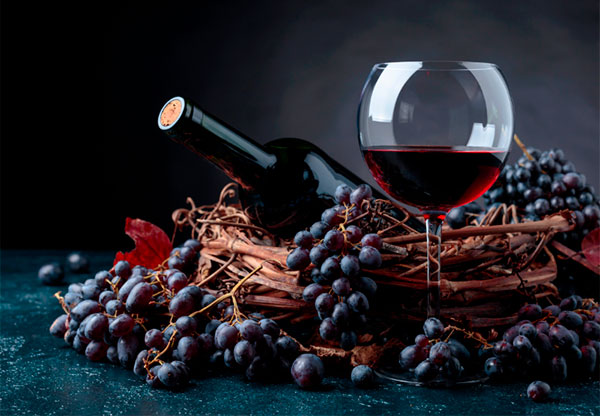
Languedoc’s rich and diverse palette of grape varieties is a testament to the region’s adaptable climate, varied terroirs, and the innovative spirit of its winemakers. This diversity enables the production of a wide range of wine styles, from crisp whites and elegant rosés to robust, complex reds and sweet fortified wines. The most grown grape varieties in Languedoc reflect the region’s historical influences and modern winemaking trends.
Red Grape Varieties
Grenache: This versatile grape is a cornerstone of Languedoc’s red wines, cherished for its ability to produce deeply colored, full-bodied wines with soft tannins. Grenache offers flavors of red fruit and spice, forming the backbone of many Languedoc blends.
Syrah: Known for its dark fruit flavors and peppery notes, Syrah adds depth and complexity to blends. It thrives in Languedoc’s warm climate, contributing structure and ageability to the wines.
Carignan: An indigenous variety, Carignan is celebrated for its high tannins and acidity, which bring freshness and balance to blends. Its flavors range from dark fruits to spice, and it is often used to add complexity to red wines.
Mourvèdre: This grape variety is valued for its dark color, strong tannins, and flavors of blackberry and meat. Mourvèdre is typically blended with Grenache and Syrah to create wines with excellent aging potential.
Cinsault: Often used in rosé production, Cinsault adds softness and aroma to blends, contributing flavors of red berries and floral notes.
White Grape Varieties
Grenache Blanc: A mutation of the red Grenache, Grenache Blanc is used in both still and sparkling wines, imparting flavors of green apple, pear, and herbal notes.
Chardonnay: While not native to Languedoc, Chardonnay has found a successful home in the region, producing full-bodied wines with a balance of acidity and flavors ranging from citrus to tropical fruits.
Viognier: This aromatic variety, with its floral and peachy aromas, is used both as a single varietal wine and in blends, adding fragrance and complexity.
Picpoul (Piquepoul): Particularly known for the Picpoul de Pinet AOC, this grape produces crisp, acidic wines with citrus and mineral notes, perfect for the region’s seafood.
Marsanne and Roussanne: These Rhône varieties are often blended together, contributing to the body, richness, and aromatic complexity of Languedoc’s white wines, with flavors of stone fruit, nuts, and spices.
Languedoc’s approach to viticulture is characterized by a balance between tradition and innovation, with winemakers embracing both indigenous and international grape varieties. This has led to an exciting and ever-evolving wine scene, where the historical depth of the region’s winemaking tradition meets the dynamic creativity of its modern producers.
The interplay of these grape varieties across Languedoc’s landscapes showcases the region’s ability to produce a spectrum of wine styles, each reflecting the unique characteristics of its terroir and the craftsmanship of its winemakers. As a result, Languedoc continues to enchant wine lovers around the world with its rich diversity of high-quality, accessible wines.
4. Discovering the Languedoc Region
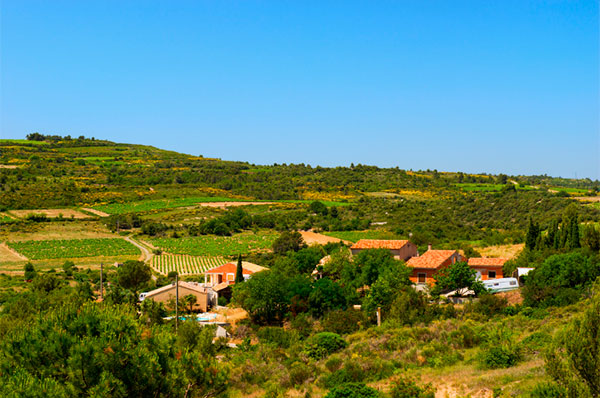
The Languedoc region, a vast expanse of land stretching from the Rhône Valley to the Spanish border, is a treasure trove of viticultural diversity, stunning landscapes, and rich historical heritage. This vibrant region offers much more than just wine; it’s a journey through history, culture, and the sensory pleasures of food and drink. Discovering Languedoc is to immerse oneself in the essence of southern France, where the sun bathes ancient vineyards, and the Mediterranean Sea influences both climate and cuisine.
Geography and Climate
Languedoc’s geography is marked by its coastal plains along the Mediterranean, rolling hills, and the backdrop of the Pyrenees mountains. This diversity in topography contributes to the region’s wide array of microclimates, allowing for the cultivation of numerous grape varieties and the production of varied wine styles. The Mediterranean climate, characterized by hot summers and mild winters, is ideal for viticulture, providing ample sunshine for grape ripening and sea breezes to moderate the heat.
Historical Towns and Architectural Marvels
Languedoc is steeped in history, with its roots going back to the Romans and even earlier. The region is dotted with remnants of its past, from the well-preserved Roman amphitheaters in Nîmes to the medieval fortress city of Carcassonne, a UNESCO World Heritage site. The cities of Montpellier and Perpignan serve as cultural hubs, offering a mix of historical architecture and vibrant contemporary life. These towns and cities are not just gateways to exploring the region’s wine but also offer a glimpse into the rich tapestry of cultures that have shaped Languedoc over the centuries.
Vineyard Tours and Wine Tasting
Exploring Languedoc’s wineries and vineyards is an adventure in itself. The region is known for its welcoming winemakers and diverse wine tourism experiences, ranging from casual tastings in rustic cellars to guided tours of state-of-the-art winemaking facilities. Many wineries offer a chance to learn about organic and biodynamic practices, reflecting Languedoc’s leading role in sustainable viticulture. Visitors can explore the five main appellations: Languedoc, Corbières, Saint Chinian, Faugères, and Minervois, each offering its unique expression of terroir and grape varieties.
Gastronomy
The cuisine of Languedoc, like its wines, is varied and influenced by the Mediterranean. Seafood is a staple, with dishes like Bouillabaisse and brandade de morue showcasing the region’s coastal bounty. The inland areas offer hearty fare, including cassoulet, a slow-cooked bean and meat stew that is a comfort food classic. The region’s wines pair beautifully with its food, from the fresh whites and rosés that complement seafood to the robust reds that stand up to the rich flavors of meat and game dishes.
Natural Landscapes and Outdoor Activities
Beyond the vineyards, Languedoc’s natural landscapes invite exploration. The region’s beaches are renowned for their beauty and offer a range of water sports. The hinterlands provide opportunities for hiking, cycling, and even skiing in the Pyrenees during the winter. The Canal du Midi, another UNESCO World Heritage site, offers leisurely boat tours and picturesque walks along its banks.
Discovering the Languedoc region is an invitation to experience the joy of French living. From its historic towns to its modern wineries, from its rugged landscapes to its sun-drenched beaches, Languedoc embodies the diversity and richness of southern France. Each visit uncovers new delights, ensuring that Languedoc remains a destination to return to, time and again.
5. The Vineyards, the Terroirs, and the Harmonies
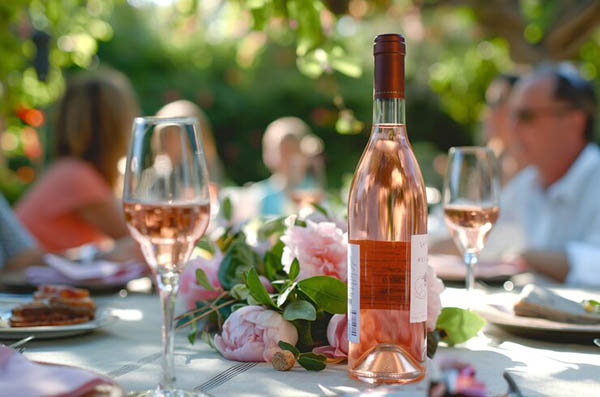
The Languedoc region’s wine identity is deeply rooted in its diverse vineyards and terroirs, which together create a symphony of flavors and aromas that are as rich and varied as the landscapes from which they emerge. This diversity is the result of a unique combination of geographical features, climate conditions, and human expertise, all of which contribute to the distinctive character of Languedoc wines.
The Vineyards: A Tapestry of Microclimates
Languedoc’s vineyards stretch across a wide range of environments, from coastal plains to rugged hills and valleys. This geographical diversity leads to a patchwork of microclimates, each with its own unique conditions for viticulture. For instance, vineyards closer to the Mediterranean coast benefit from the cooling sea breezes and milder temperatures, ideal for grapes like Grenache and Syrah, which require a long, warm growing season to fully ripen. In contrast, inland areas with higher elevation and more varied terrain can experience cooler temperatures, providing a suitable environment for varietals such as Mourvèdre and Carignan, which thrive in these conditions.
Terroirs: The Soul of Languedoc Wines
The concept of terroir is central to understanding Languedoc wines. Terroir refers to the unique combination of soil, climate, topography, and local winemaking traditions that give a wine its distinctive character. Languedoc’s terroirs are remarkably varied, with soils ranging from limestone and chalk in the hills to alluvial deposits near the rivers and coastal plains. This variety allows for a wide range of grape varieties to be cultivated, each expressing the nuances of its terroir in the glass. For example, wines from the rocky, limestone-rich soils of the higher elevations tend to exhibit a mineral quality and elegance, while those from the warmer, alluvial soils near the coast can be more fruit-forward and lush.
Harmonies: Blending Tradition and Innovation
Languedoc’s winemakers are masters of blending, creating harmonious wines that reflect the region’s rich palette of grape varieties and terroirs. The traditional blends often feature a mix of Grenache, Syrah, and Mourvèdre for reds, and Grenache Blanc, Roussanne, and Marsanne for whites, each varietal contributing its own characteristics to the final wine. However, Languedoc is also a region of innovation, where winemakers experiment with new varietals and winemaking techniques to produce unique and contemporary wines. This spirit of innovation, combined with a deep respect for tradition, results in wines that are both diverse and of high quality, appealing to a wide range of tastes and preferences.
The vineyards and terroirs of Languedoc, together with the skill and creativity of its winemakers, create a harmonious blend that is reflective of the region’s identity. The resulting wines are not just beverages but expressions of a place and its people, offering a taste of the sun-drenched landscapes, rich history, and vibrant culture of Languedoc. Through understanding the intricate relationship between the vineyards, terroirs, and the harmonies they produce, wine lovers can appreciate the depth and complexity of Languedoc wines, making each sip a journey through this enchanting region of southern France.
6. Different Dishes for Different Languedoc Wines
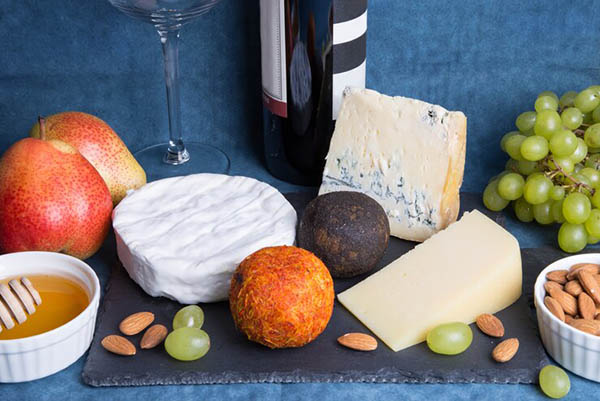
Languedoc wines, with their vast array of styles and flavors, are versatile companions to a broad spectrum of dishes. From the robust and spicy reds to the crisp and aromatic whites, there’s a Languedoc wine to elevate every meal. Let’s explore perfect pairings for three distinct and beloved dishes: Roquefort cheese, Pork Filet Mignon, and Seafood Pie, each showcasing the region’s culinary diversity and its wines’ adaptability.
1st – Roquefort Cheese
Roquefort, a world-renowned blue cheese from the South of France, is characterized by its rich, tangy, and slightly salty flavor profile. Its intense flavors require a wine that can match its strength without being overshadowed. A sweet wine from Languedoc, such as a Muscat de Saint-Jean-de-Minervois, provides a delightful contrast to Roquefort’s sharpness. The natural sweetness and aromatic qualities of Muscat beautifully balance the cheese’s pungency, creating a harmonious pairing that elevates both the wine and the cheese.
2nd – Pork Filet Mignon
Pork Filet Mignon, tender and subtly flavored, pairs wonderfully with medium-bodied red wines from Languedoc. A red blend from the Minervois appellation, featuring Grenache, Syrah, and Carignan, complements the pork with its smooth tannins, red fruit aromas, and a hint of spice. The wine’s structure and fruitiness interact beautifully with the pork’s delicate flavors, enhancing the succulence of the meat without overwhelming it. This pairing is a testament to the versatility of Languedoc’s red wines and their ability to accompany a range of dishes from simple to sophisticated.
3rd – Seafood Pie
Seafood Pie, a hearty and flavorful dish combining various types of seafood in a creamy sauce, encased in a flaky pastry, calls for a wine that can stand up to its rich flavors while offering a refreshing counterpoint. A white wine from the Picpoul de Pinet appellation, made from the Picpoul grape, is an ideal match. Known for its vibrant acidity and citrus fruit notes, Picpoul de Pinet cuts through the creaminess of the pie, balancing the dish’s richness with its crisp, clean finish. This pairing showcases the affinity between Languedoc’s fresh, aromatic white wines and the region’s exquisite seafood dishes.
Each of these pairings reflects the deep connection between Languedoc wines and the region’s gastronomy, highlighting the ability of the wines to complement and enhance a wide variety of flavors. Whether it’s the boldness of Roquefort cheese, the subtlety of Pork Filet Mignon, or the complexity of Seafood Pie, there’s a Languedoc wine to bring out the best in every dish, demonstrating the region’s culinary versatility and the harmonious relationship between its food and wine.
7. Keep an Eye Out for Languedoc Wines
As we’ve journeyed through the sun-drenched vineyards, historic terrains, and the gastronomic delights of the Languedoc region, it’s clear that this corner of France holds a treasure trove of vinicultural gems waiting to be discovered. Languedoc wines, with their blend of tradition and innovation, offer something for every palate, from robust reds and refreshing whites to sophisticated sparklings and luscious sweets. This diversity, coupled with an unwavering commitment to quality and sustainability, positions Languedoc as a region on the rise, poised to capture the hearts of wine lovers around the globe.
A Call to Exploration
For those yet to delve into the wonders of Languedoc wines, there’s no better time to start than now. Each bottle tells a story of its terroir, the passion of its winemakers, and the rich history of the region. Whether you’re a seasoned oenophile or a curious newcomer, Languedoc offers an endless array of discoveries. From the iconic appellations to the innovative Vins de Pays, the wines of Languedoc are a testament to the region’s dynamic wine scene.
Engage and Share Your Discoveries
We encourage you to share your Languedoc wine experiences, discoveries, and pairings. Have you found a Languedoc wine that perfectly complements a favorite dish? Or perhaps a visit to a Languedoc vineyard that captured your heart? Your stories and insights enrich our community and inspire fellow wine enthusiasts to embark on their own Languedoc adventures.
7. Keep an Eye Out for Languedoc Wines
As we’ve journeyed through the sun-drenched vineyards, historic terroirs, and diverse wines of the Languedoc region, it’s clear that this corner of France offers something truly special for wine lovers. Languedoc wines, with their blend of tradition and innovation, provide a wide array of choices for enthusiasts seeking quality, value, and variety.
A World of Wine Awaiting Discovery
Languedoc’s wine scene is dynamic and ever-evolving, characterized by its adventurous spirit and commitment to excellence. From robust reds and refreshing whites to elegant rosés and luscious sweet wines, the region offers a rich palette of flavors that can satisfy every palate and accompany a myriad of culinary delights. The region’s focus on sustainable viticulture and organic practices also means that many Languedoc wines are not just delicious but are produced with care for the environment.
An Invitation to Explore
For those yet to delve into the world of Languedoc wines, consider this an invitation to explore. Each bottle tells a story of its origin, the passion of its winemakers, and the unique characteristics of its terroir. Whether you’re a seasoned wine connoisseur or a curious novice, Languedoc has something to surprise and delight you.
Your Thoughts and Experiences
Now, we turn to you, our readers. Have you had the pleasure of tasting Languedoc wines? Perhaps you’ve visited the region and have a memorable story to share. Or maybe you have a favorite Languedoc wine or pairing that you discovered and can’t wait to tell others about. We encourage you to comment below with your experiences, questions, or any insights you have about Languedoc wines. Your contribution not only enriches our community but also inspires others to embark on their own journey of discovery through the vibrant and varied wines of Languedoc.
As we keep an eye out for the next great bottle from Languedoc, let’s raise a glass to the enduring beauty and diversity of this remarkable wine region. Cheers to your next wine discovery!
